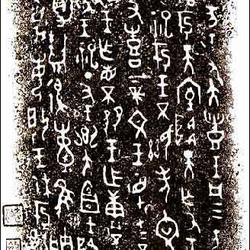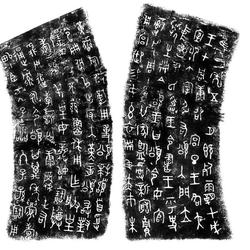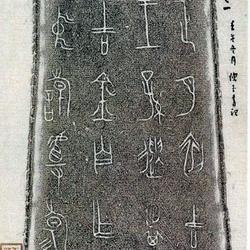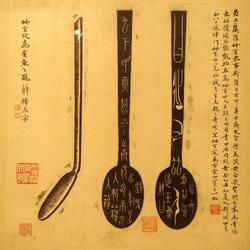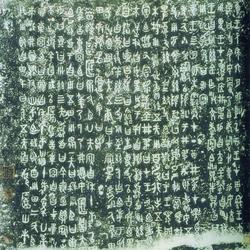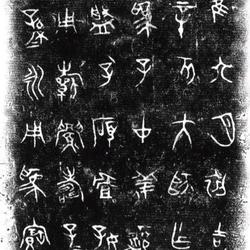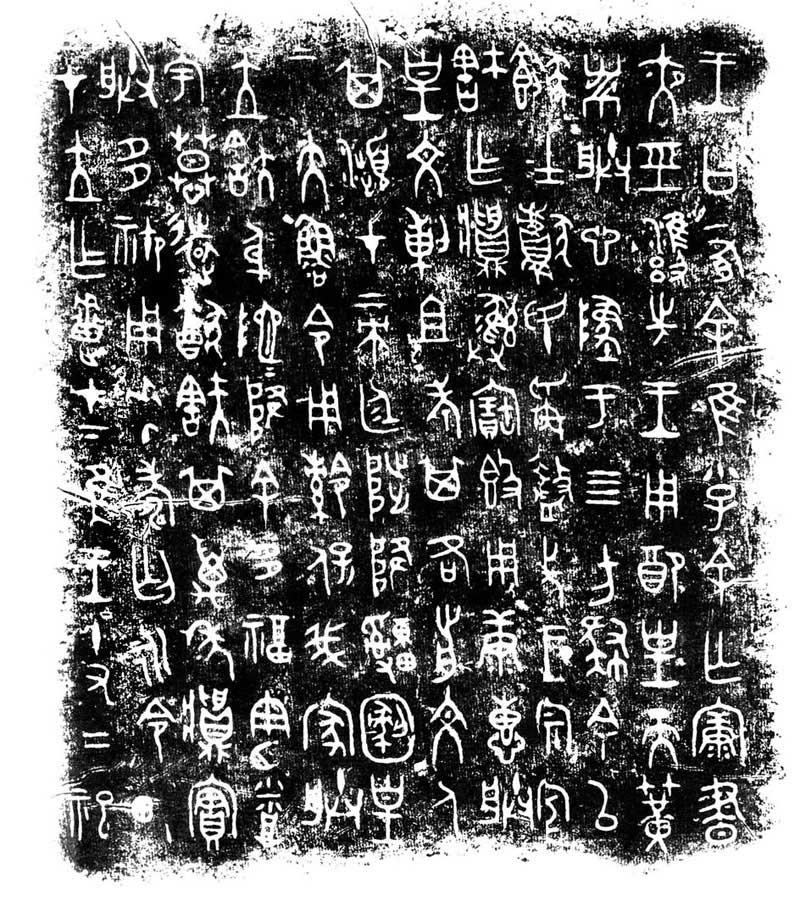
Rubbing of "Gui"
The inscription reads: "The king said: There is Yu Quan (although) a boy, Yu died (Kang) day and night, Nuo (Jing) supports the late king, and uses it to match the emperor's sky, and the spring and black (to my) heart, I (give) to the (four) directions. Four) Yu? (to)? Scholars dedicated to the people, the ancestors of the royal family of Zhuohu, (made?) Yi Baogui, used Kang Hui? (I) Huang Wen (lie) ancestor test, each of them is like the (Ge Qian) literati, and their Bingcai (frequency) surrendered to the imperial court, and Emperor Dalu ordered (order) to use the order to protect my family, my position, and my body. I surrendered Yu Duofu, (Xian) Hao) Yu Mu Yuanyou, (its) ten thousand years? (?), really (I) many? (imperial), use?? (life), and the order (order) will be forever, the emperor will be established (稯 reign), suddenly (As) Jincai (under), King Wei (wei) has two sacrifices. "
It was unearthed in Qicun, Fufeng, Shaanxi Province in May 1978.
Extravagant mouth and wide body. The abdomen is bulging, the feet are circled, and a square seat is attached below. The big dragon ears are towering, and there are dragon drapes, which are very magnificent. The belly and square seat are decorated with straight rib patterns, and the four corners of the square seat are decorated with animal face patterns. The body is huge and tall, and all the Gui in the Western Zhou Dynasty are considered to be the largest. This Gui was cast in the twelfth year of King Li's reign, and it is the only royal weapon whose place of origin has been confirmed.
This is the largest piece of Gui and is known as the "King of Gui" in the Western Zhou Dynasty. The top of the treasure is round and the bottom is round, symbolizing the "round sky and square earth". The top is like a stone drum, the bottom is like a platform, and the whole body is covered with vertical ribs, like the markings on a tiger's skin. The two ears are soaring and domineering, the simplicity is generous, the mystery is ferocious, "", the pronunciation of this character is "hu", which is the name of King Zhou Li of the Western Zhou Dynasty.
The neck and ring feet of the Gui are decorated with animal body patterns, and the belly and forbidden wall are decorated with straight stripes. There is an inscription on the inner bottom with twelve lines and one hundred and twenty-four characters, which is a self-written congratulatory message written by King Li of Zhou Yuan Dynasty to worship the late king. The main idea is: I work hard day and night to run the business of the late king in order to be worthy of the emperor. I use the land to dedicate it to the people and worship the royal family of the late king. I will make this Yi Bao Gui to protect the ancestors of Hui and Qian sects in order to worship the emperor's great destiny and protect the Zhou family, the throne and myself. May you be blessed with much blessing, longevity and wisdom.

